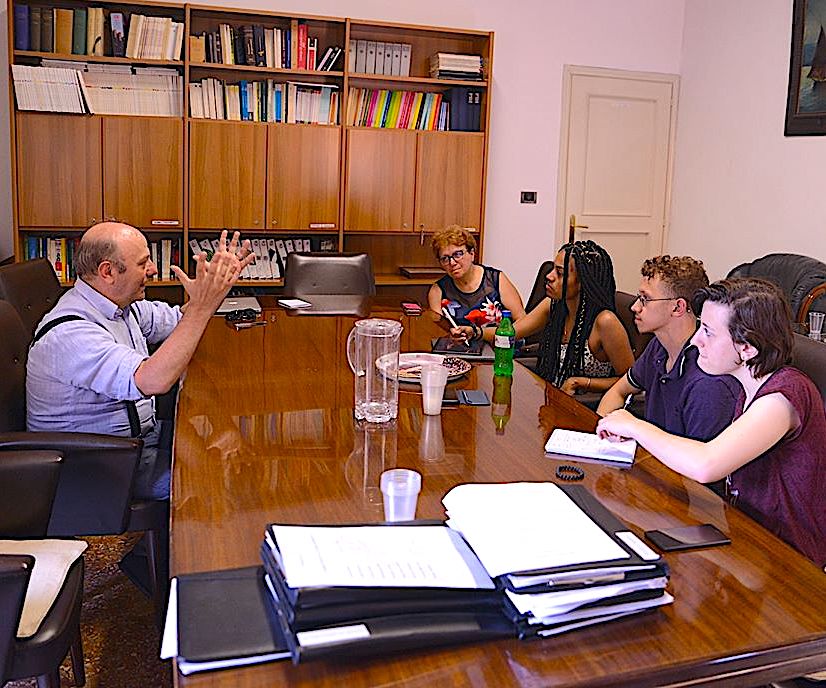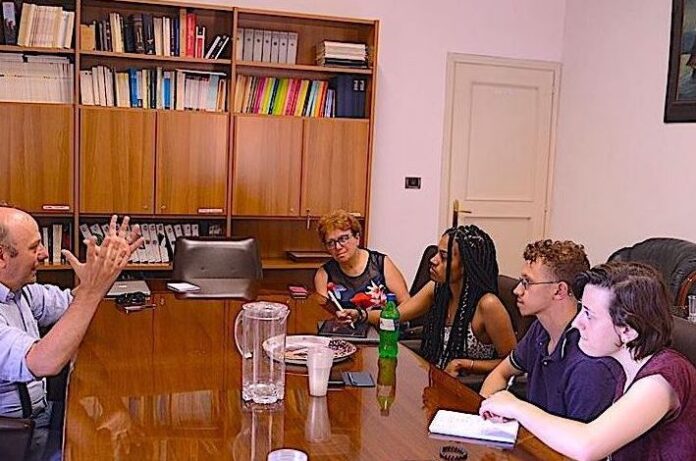
Threats to Italian journalism are shrinking the strength and reach of news, with powerful groups, among them the mafia and the political right, damaging journalists’ already-dwindling revenue and power, journalists and media analysts in Italy say.
“The goal is to take away [journalists’] credibility, and to make people think that they are privileged,” Silvestro Rammuno, treasurer of the Bologna office of the Order of Professional Journalists, said a summer 2019 interview. “That they are serving a higher authority. There is some truth in that, but those continually saying that they can’t and shouldn’t believe journalists is very similar to what is happening in America.”
Politicians in every country are aware of reporters’ power. This power stems from journalists’ ability to sway public opinion when simply reporting on relevant facts — a politician’s biggest fear, Rammuno said.
Former Deputy Prime Minister Matteo Salvini targeted the Italian press, threatening to remove police protection from the some 20 journalists in danger who receive it, and ratcheting up attacks on a field already besieged by financial problems. Rammuno and other journalists interviewed equated Salvini’s anti-media rhetoric with that of U.S. President Donald Trump’s verbal attacks on American journalists.
In Italy, corrupt figures have also threatened journalists, and resorted to violence. Journalists have been attacked and shot at, assaulted by far-right extremists and harassed by authorities, who have sometimes seized journalists’ electronic devices, and filed defamation suits.
Among ordinary residents, though, journalists “are still highly respected,” Rammuno said.
And, as in the United States, declining financial support, opportunities and pay are seen as even bigger problems for most Italian journalists than threats from politicians and the mafia are.
A leading author is defiant
Thousands of listeners gathered in Bologna’s Piazza Maggiore in June 2019, to hear acclaimed anti-mafia author Roberto Saviano speak about the state of Italian social and political affairs.
Though Salvini had threatened to remove Saviano’s state-paid police protection, and at one point filed a criminal defamation suit against him, Saviano climbed to the stage unescorted, and spoke critically of a government he believes does too little to welcome and resettle the waves of African and Middle Eastern migrants reaching Italian shores.
Saviano criticized what he portrayed as the Italian government’s callous stance toward the migrants – the sorts of criticisms that provoked Salvini to threaten to remove Saviano’s police escort.
“Matteo Salvini is not a good person, let’s stop telling him he is,” Saviano thundered unabashedly from the stage, during the annual La Repubblica Ideas Festival. “We are dealing with someone who is transforming our country.”
Saviano is one of Italy’s best-known commentators. After vividly detailing the inner workings of the Camorra crime family in his 2006 book “Gomorrah,” he was targeted by the mob.
While under police protection, Saviano cannot live like an ordinary man. He cannot walk anywhere; everything he does needs to be pre-planned (even though life is inevitably unpredictable). At least one person on his security team must know his whereabouts at every second of the day. He’ll have to live this way until his last breath.
Salvini never did have a chance to make good on his threat to remove Saviano’s armed guard. A few months later, in September 2019, the vice minister lost his post, after forcing snap elections many saw as an effort to allow him to seize the office of prime minister. Though Salvini lost, and was forced out of government, he remains a powerful politician on the right.
Italy climbs in the international journalism rankings
Yet media rights organization Reporters without Borders now ranks press freedom in Italy (in 43rd place in 2019, up from 46th in 2018) above that of the United States (ranked 48th, after falling three places from the previous year).
“Yes, the situation is definitely better than maybe from past years,” Rammuno acknowledged – though he says he believes the list contains significant bias, and cautioned that such rankings contain “awful contradictions.”
“For example, there are countries in Central Africa where there are dictatorships, and still they are said to have better in press quality than some democracies in the north of Europe,” he said.
Italy in 2016 instituted its first freedom of information act, which gives individuals the right to request information from public bodies without charge. Watchdog groups noted that the law includes broad exemptions for information the government thinks may compromise state secrets, public order, national defense, international relations, the state’s economic and financial stability or ongoing criminal investigations – so the effectiveness of the new law remains to be seen.
And in the latest ranking by another organization, Freedom House, found Italy that fared worse than the United States on the question: “Are there free and independent media?”
Italian press freedom is also ranked lower than that of most other countries in Western Europe. It was the European country that experienced the highest number of reported threats to journalists in 2018; Reporters without Borders said journalists’ unions had complained of a “constant risk of violence fueled by the hostile rhetoric of members of the government and the ruling coalition parties.”
Fighting for journalism
“Integrity and independence of journalists is the only weapon we have against power,” argued Marco Damilano, the director of the national news magazine L’Espresso.
It’s journalists’ job, and right, to stand by the facts and to report the objective truth, Damilano stressed. He pointed out that, in the age of social media and “fake news,” the line between fact and fiction was growing dangerously blurred.
He accused politicians of pandering to ordinary Italians, and of trying to turn public sentiment against journalists.
“They try to direct the crowd and public opinion against your independence and integrity,” Damilano said. “We [also] see this today with Trump and his supporters.”
Mattia Cecchini, Bologna bureau chief of the Dire news agency, believes journalists must maintain strong networks, as all face similar struggles. And journalists employ a particular weapon against retaliation that is a lot more effective than violence, he pointed out: words.
Fewer jobs at lower pay
Though the plight of Saviano and other high-profile investigative journalists dominates the headlines, Rammuno pointed out that only a handful of journalists in Italy require police protection; the bigger issues, for most journalists, surround dwindling job security and pay.
Several surveys suggest that the average salary for full time journalists in Italy is about $45,000 — comparable to the average pay for full time U.S. media workers, listed by the U.S. Bureau of Labor Statistics in mid-2018 as $46,550.
But the real issue is that only a minority of Italy’s some 100,000 journalists have been able to land full time, permanent positions; another 15,000 are working on typically low-paid finite or renewable contracts, and as many as 65 percent are freelance journalists, who may earn as little as $20 an article.
Women journalists sidelined
Women journalists fare especially poorly: they are underrepresented both in newsrooms and bylines.
In Italy, only 21% of published articles carry a woman’s byline, according to a study by the European Journalism Observatory, which pronounced Italy tied with Germany as the European country with the most gender-imbalanced reporting; women were also featured unaccompanied by men in just 11 percent of published photos.
“It’s rare to encounter a successful female journalist in Italy,” said former journalist Luigi Valeri, who is now a member of the faculty at Bologna’s Johns Hopkins School of Advanced International Studies.
A woman journalist might hold several positions, because employers won’t risk hiring new journalists who may not generate quick ratings, he said. And even this sort of juggle doesn’t guarantee a female journalist a reliable or steady income.

